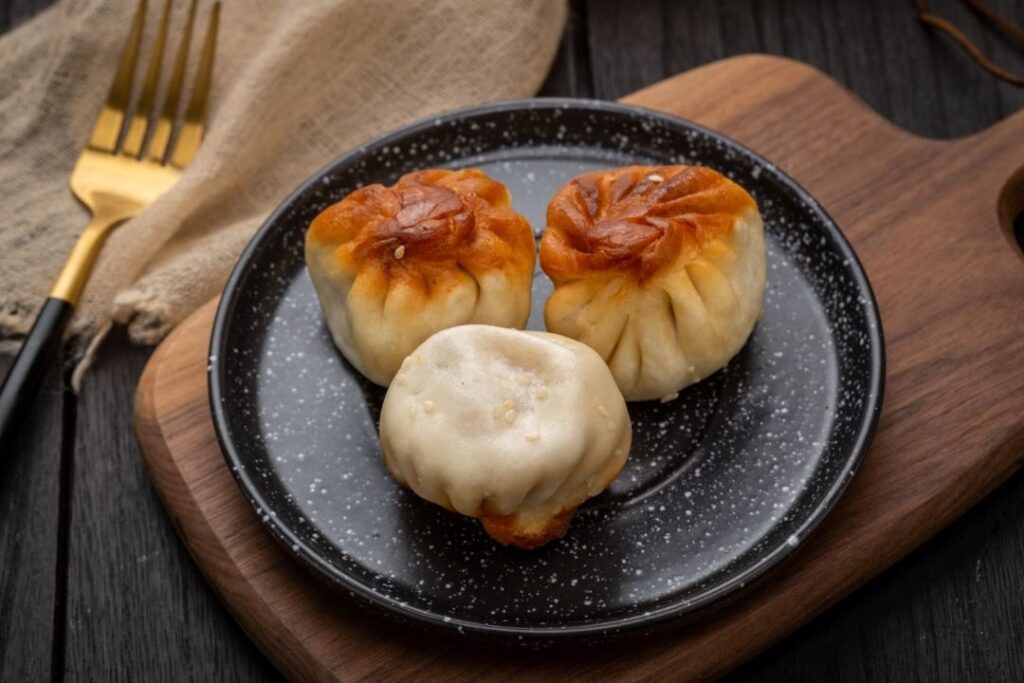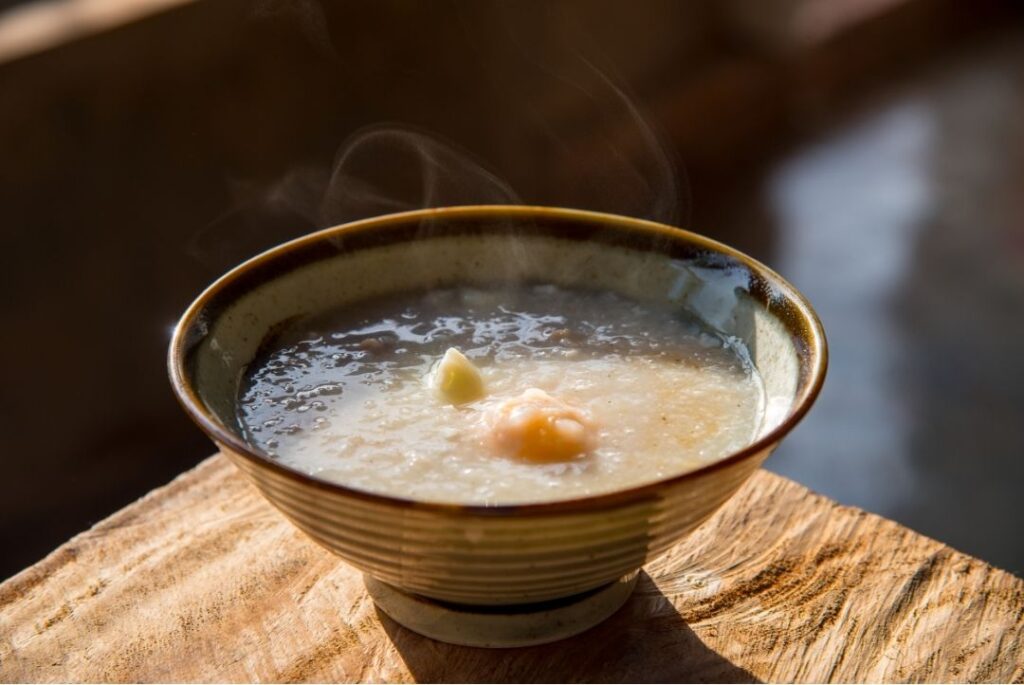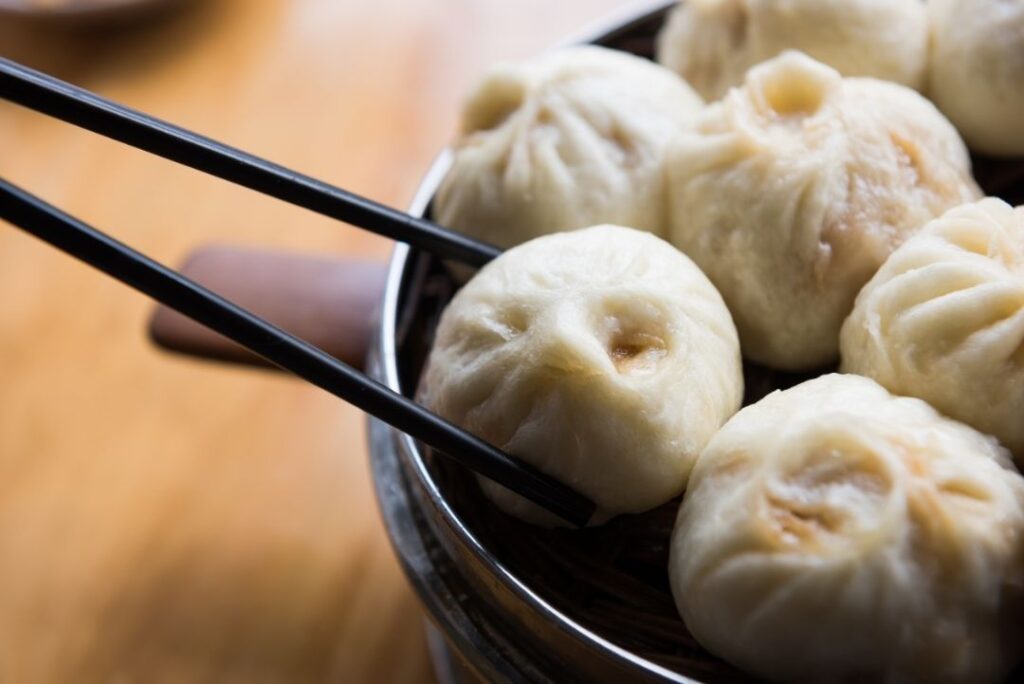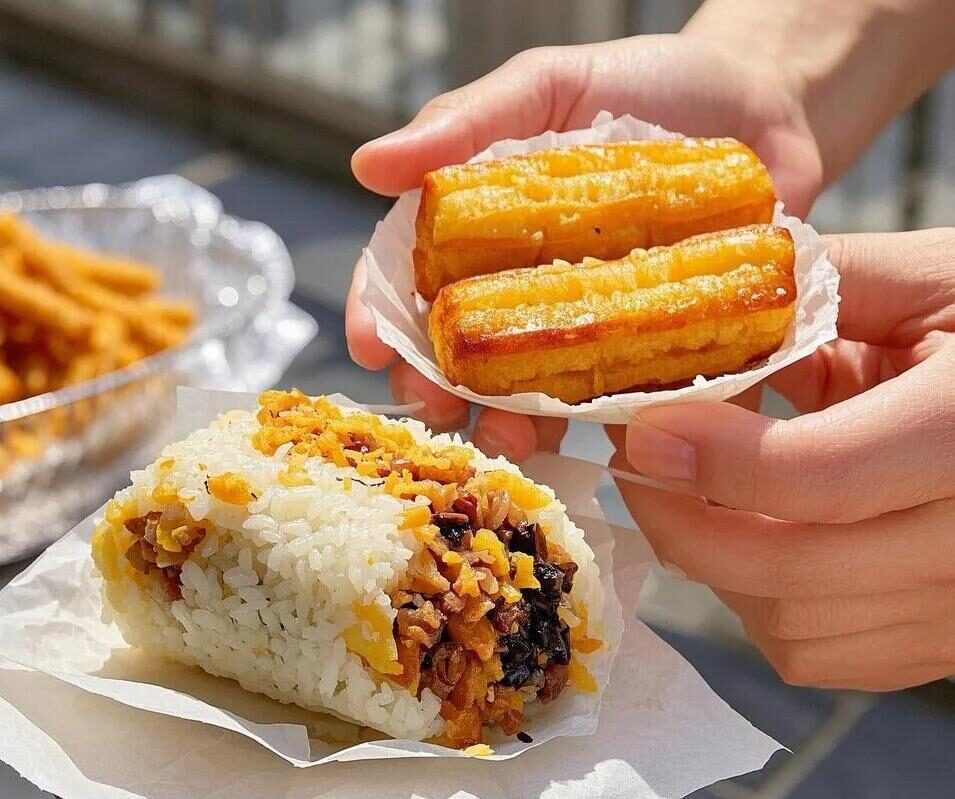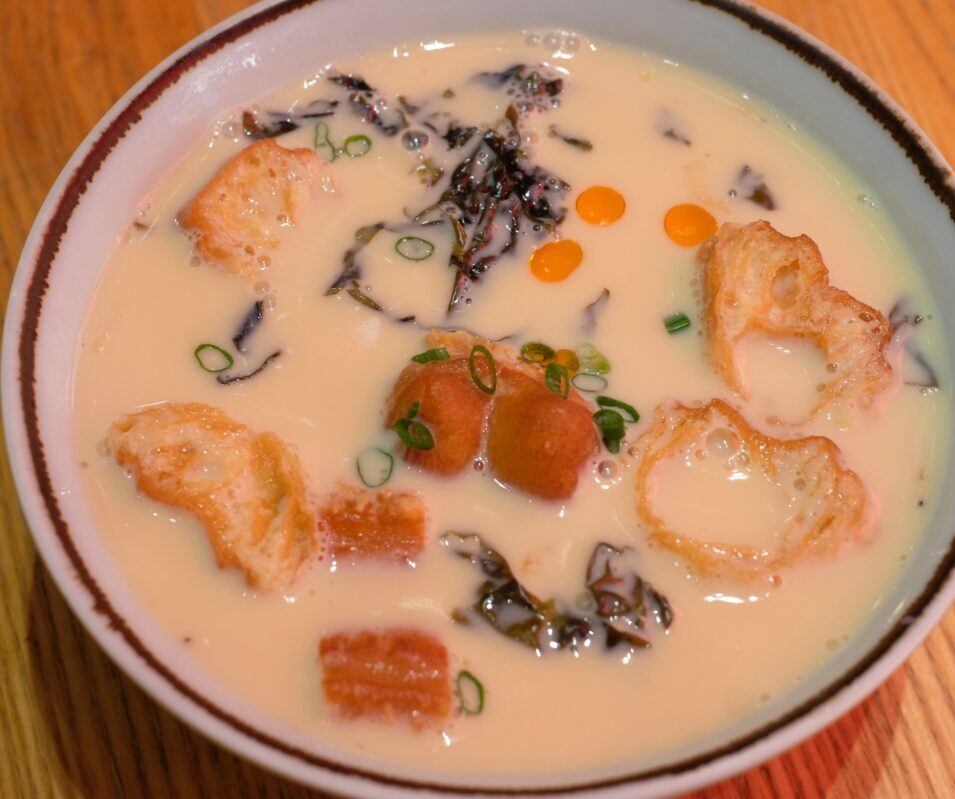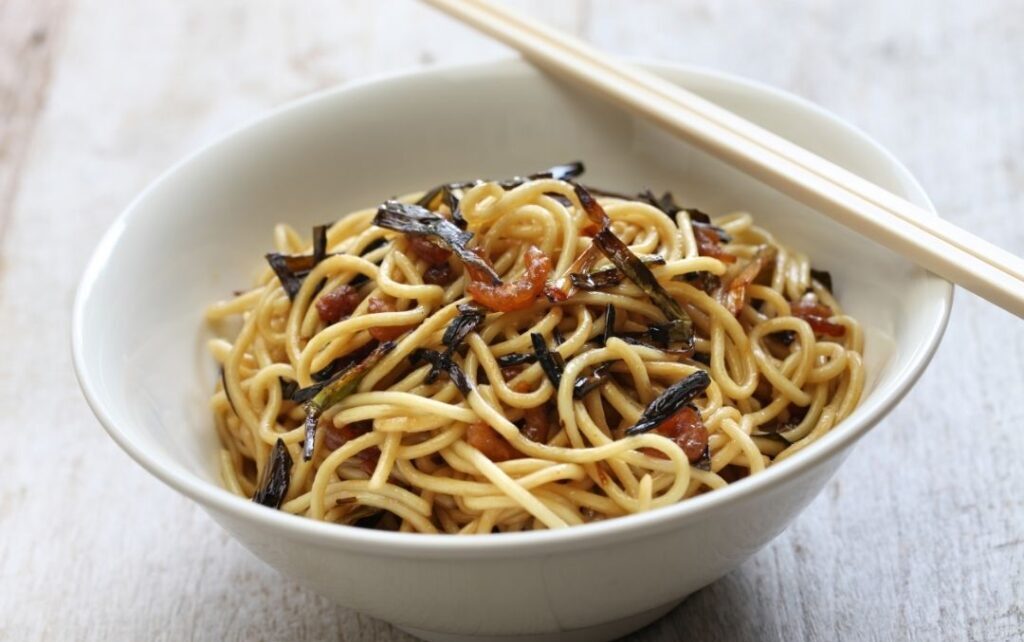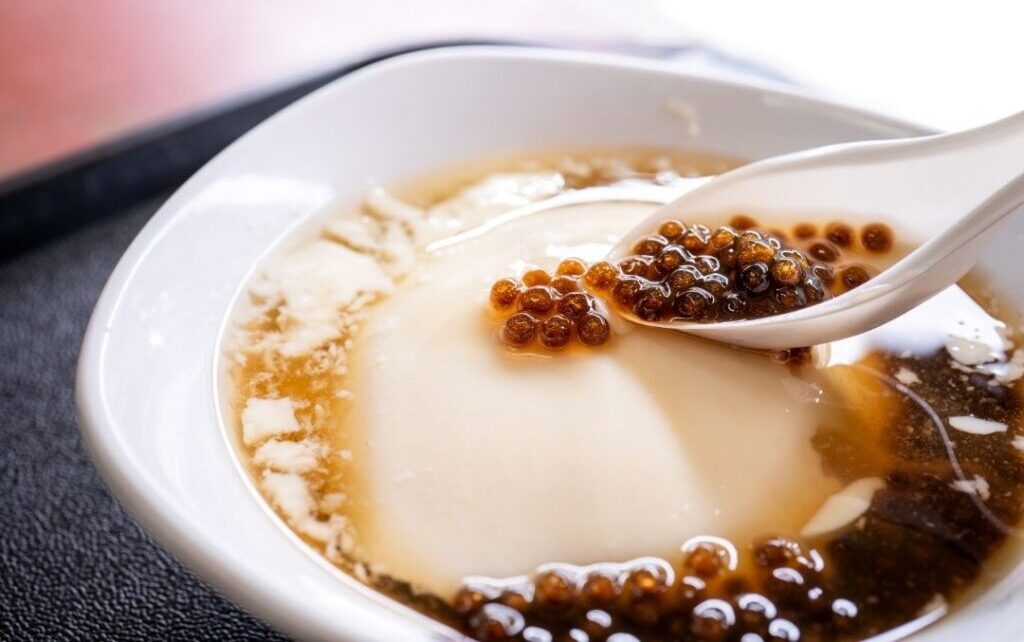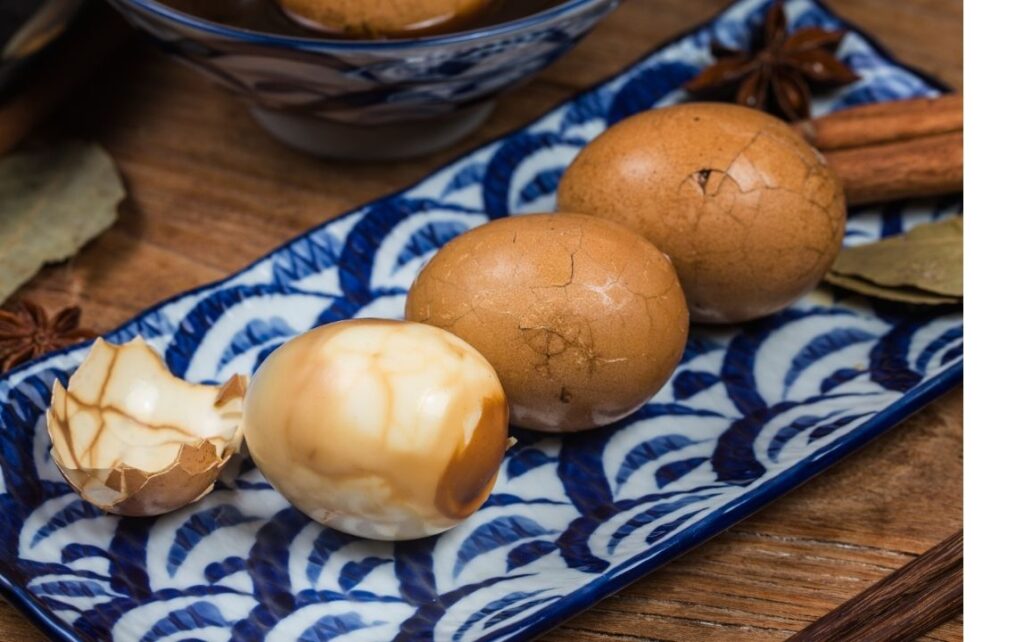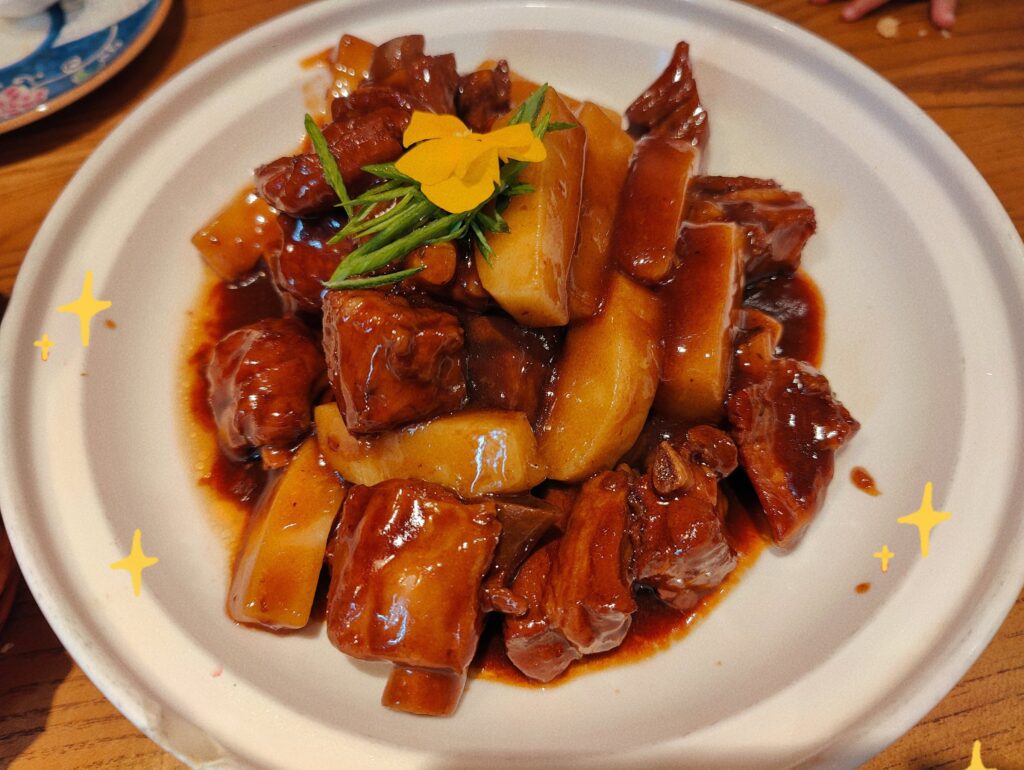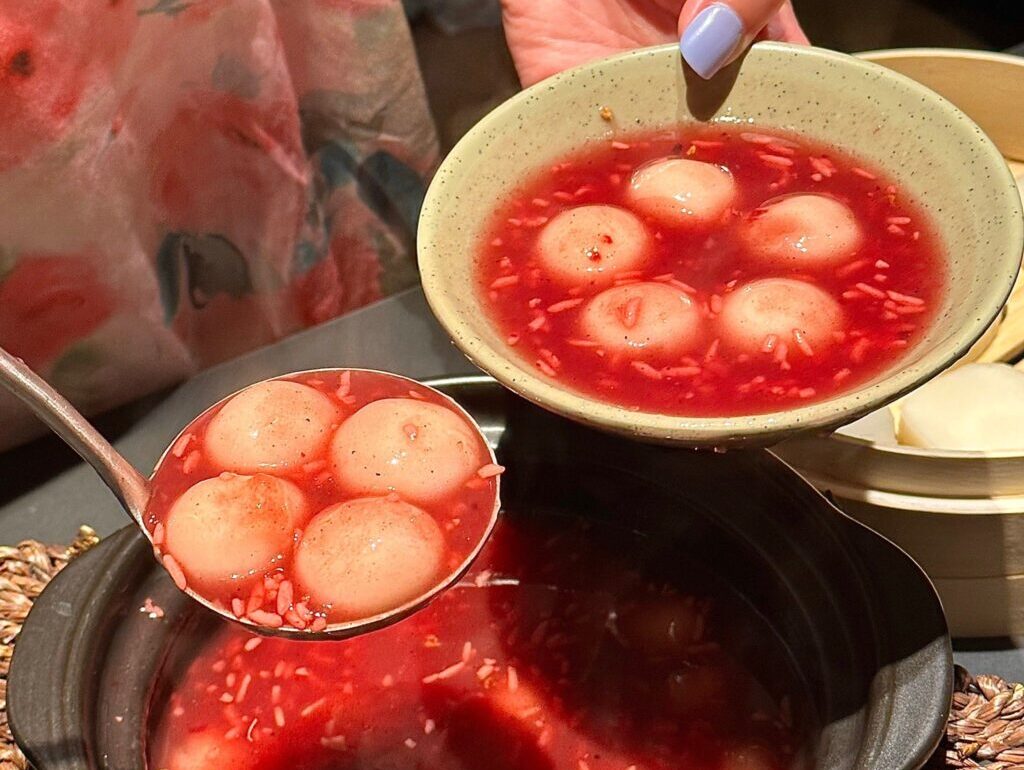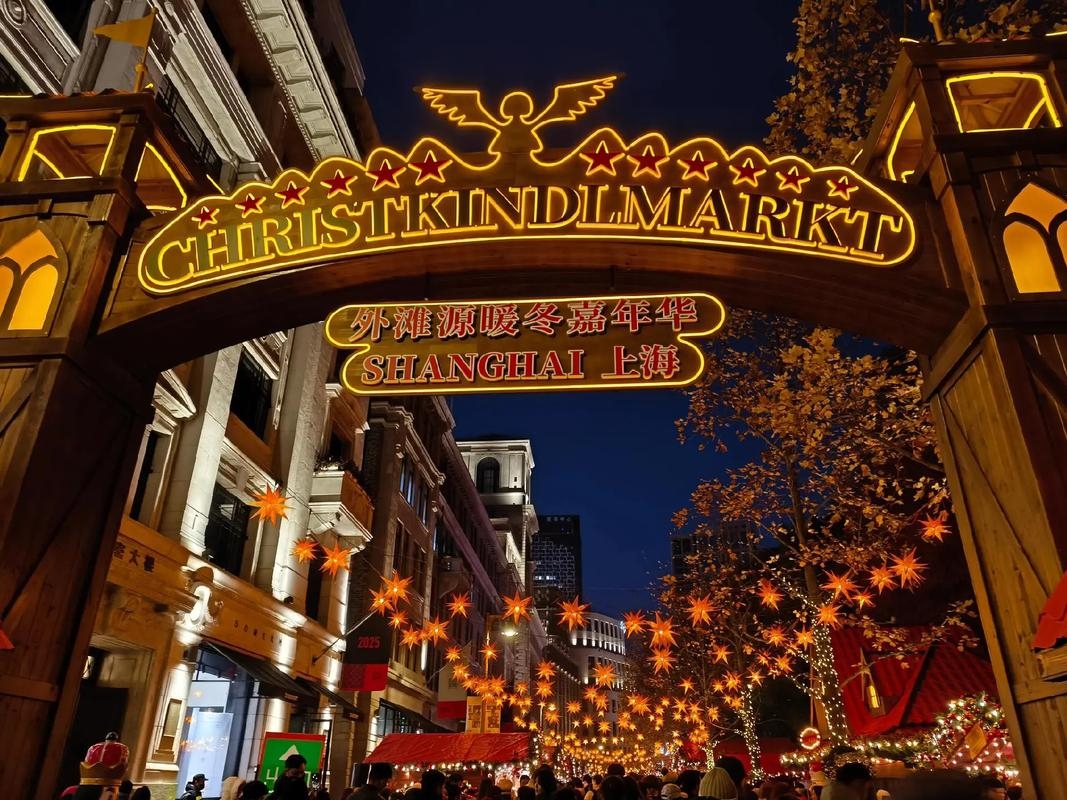So here’s something I didn’t get right away—Shanghai breakfast isn’t just about one dish. It’s more like a rhythm. A kind of quiet choreography that plays out in alleyways and on sidewalks. You wake up, step outside, and the city’s already moving. Vendors flipping scallion pancakes with one hand while pouring soy milk with the other. Office workers and retirees elbow-to-elbow at steam baskets, grabbing food with the same urgency you’d expect during a train transfer. Nobody’s waiting around for a brunch menu. There’s no time for that. You grab what speaks to you that morning and keep moving. It’s fast, but not rushed. It’s casual, but never careless.
After years of bouncing between stalls and following hungry crowds, I started to notice patterns. Certain combos just kept showing up again and again—like sheng jian bao with plain congee, or ci fan tuan with savory soy milk. They weren’t written anywhere, and nobody told me they were the “right” pairings. But they made sense. They worked. These five combos I’ve picked aren’t definitive. They’re just the ones I saw most often in local hands. If you’ve got five mornings in Shanghai, try five different rhythms. You’ll understand the city a little more with each one.
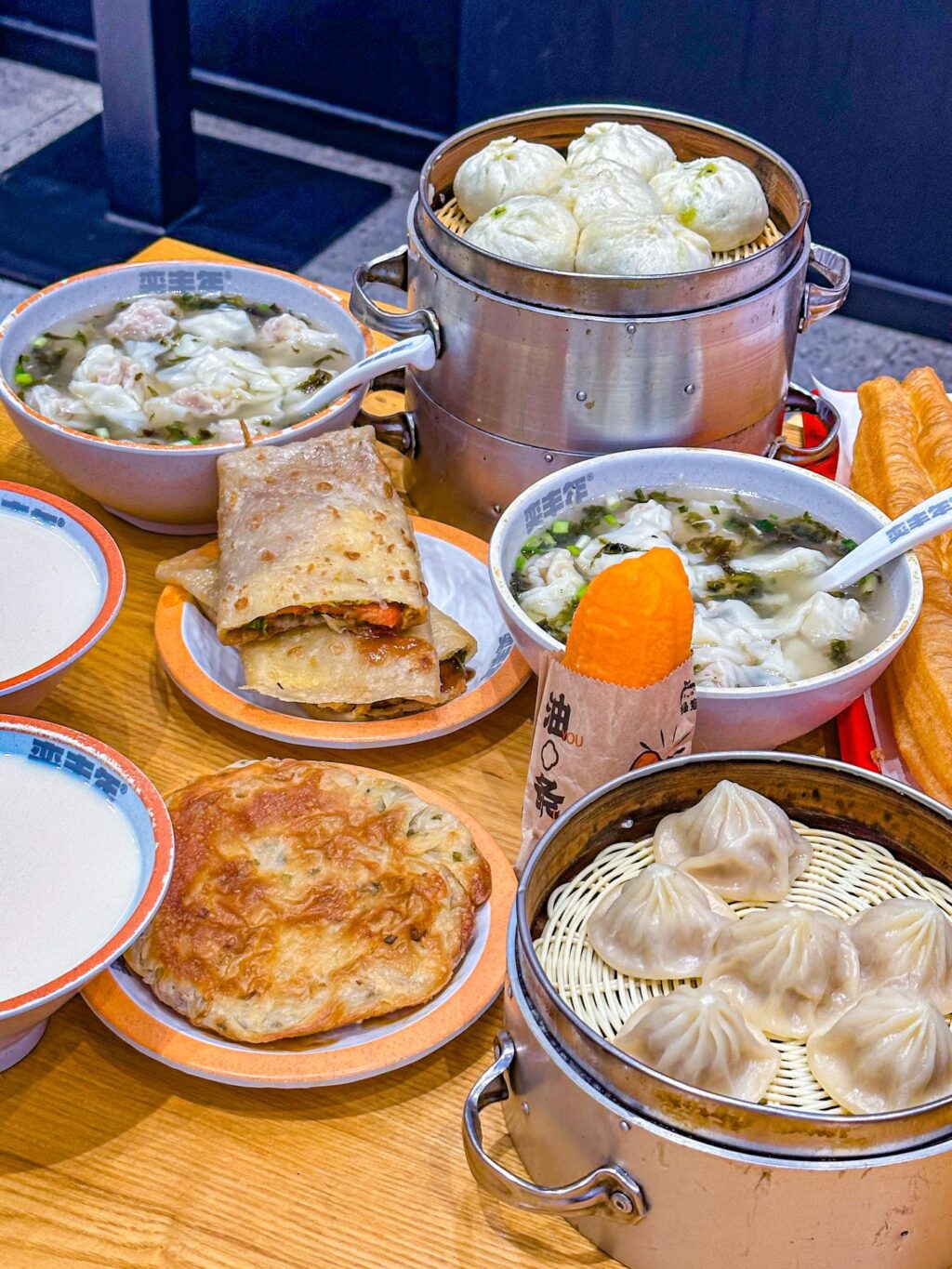
Classic Shanghai Breakfast
1. Crispy Meets Mild:Sheng Jian Bao + Plain Congee
- Sheng Jian Bao
- Plain Congee
It’s loud. You’ll hear it before you smell it. That sharp sizzle when pork buns hit the flat-top? That’s sheng jian bao being born. The bottom crisps into a golden crust, while the top stays pillowy soft. Inside, there’s scalding broth, minced pork, and sometimes a whiff of scallion. Biting into one is a careful dance—go too hard, and you’ll wear your breakfast.
But what makes this combo stand out is the plain congee on the side. Not fancy, not seasoned. Just hot, starchy rice porridge. Sounds bland? That’s the point. It cools your tongue, calms the grease, and gives the bun a blank canvas to play on. Locals swear by it. Like coffee and toast, but Chinese.
Sheng jian bao traces back to early 1900s Shanghai, when street vendors in Yangpu and Nanshi wanted something portable and filling. Congee, meanwhile, dates back to the Han Dynasty, always there for the sick, the tired, or just the early riser. Together, they feel old-school and everyday, a breakfast you don’t have to explain.
I had this combo at Feng Yu Sheng Jian, just off Huaihai Middle Road. Bun in one hand, spoon in the other. I stood by a tree and no one cared. That’s how you know it’s real.
Where: Feng Yu Sheng Jian (multiple locations)
Price: $2.50 for 4 buns, $1.00 for congee
2. Soup-Filled & Smooth:Xiao Long Bao + Soy Milk
- Xiao Long Bao
- Soy Milk
This combo leans gentler. Xiao long bao, those delicate soup dumplings, might look fragile—thin-skinned, pleated, almost too pretty to eat. But bite in, and it explodes with hot pork broth, wrapping your tongue in warmth. You don’t chew fast. You pause. Which is where the sweet soy milk comes in. Locals sip it not to balance flavor but to carry them from one dumpling to the next. It’s soft, slightly sweet, and usually fresh-ground that morning. Sometimes even a little smoky from the soybeans roasting.
The first time I saw this pairing was at Jia Jia Tang Bao, near People’s Square. Folks stood around the counter, some in suits, others in slippers. They’d bite, sip, breathe—and repeat. Not graceful, not slow, but full of rhythm. It felt intimate, like watching a city breathe in the morning.
Xiao long bao is a product of Jiangnan cuisine, with roots in Nanxiang, a suburb of Shanghai. Originally a tea house snack, it became a symbol of craftsmanship—each fold handmade. The soy milk? That’s older. A staple of Chinese vegetarian breakfasts, it goes back centuries, a quiet constant. Together, they show Shanghai’s tender side, one that doesn’t shout—but definitely stays with you.
Where: Jia Jia Tang Bao (near People’s Square)
Price: $3.50 for 6 dumplings, $1.20 for soy milk
3. Sticky, Savory, Satisfying:Ci Fan Tuan + Savory Doujiang
- Ci Fan Tuan
- Savory Doujiang
This one’s all about fueling up before the rush. You’ll see this combo clutched in the hands of early commuters—ci fan tuan, or sticky rice roll, is like Shanghai’s answer to the breakfast burrito. It’s a fat, warm cylinder of glutinous rice packed with you tiao (fried dough), pickled mustard greens, pork floss, and sometimes a whole tea egg smashed in. It's compact but dense, and weirdly portable. The outer rice sticks to your fingers, the crunch inside surprises you, and it leaves you full for hours.
Now pair it with savory doujiang, which isn’t your typical soy milk. Locals pour it over vinegar, chili oil, dried shrimp, and let it curdle into a tofu-like soup. This style of soy milk—salty, spicy, steamy—dates back to northern China but got adapted in Shanghai’s street breakfast culture. It wakes you up. Literally. I had it one cold morning at Wang Ji Dou Jiang, and the mix of textures and heat was so comforting, I stayed outside ten more minutes just soaking it all in.
Ci fan tuan traces back to Hubei and Jiangsu, often eaten on-the-go. But it found its stride in Shanghai, where it got stuffed fuller and wrapped tighter—ready for the subway. It’s the working-class hero of breakfast.
Where: Lao Cai Ci Fan Tuan (Rui Jin 2nd Road), Wang Ji Dou Jiang (Dingxi Road)
Price: $2.00 rice roll, $1.50 soy milk
4. Slurp & Snack Friendly:Scallion Oil Noodles + Tea Egg + Tofu Pudding
- Scallion Oil Noodles
- Tofu Pudding
- Tea Egg
I didn’t get this combo at first. Cold scallion oil noodles for breakfast? With a tea egg and tofu pudding? It felt random. But then one rainy morning off Changle Road, I saw this guy in a tracksuit slurping noodles, cracking an egg one-handed, and scooping tofu like second nature. It wasn’t flashy—but it made sense. That’s Shanghai breakfast for you. It’s more about rhythm than flavor bombs.
The noodles are chewy, cool, and glazed in fragrant scallion oil—no spice, just depth. A tea egg—soft-boiled and soaked in soy sauce—adds that familiar, comforting bite. You kind of eat it absentmindedly, like locals do. The tofu pudding? That’s where things slow down. It’s warm, savory, sometimes topped with dried shrimp or scallions, and melts like silken custard. Not dessert—more like a quiet pause before the day kicks in.
I always grab this set at Xinwang Noodle House near South Xiangyang Road. You stand, eat fast, maybe dodge a scooter or two. But somehow, it settles you. Like, “okay, now we go.”
Where: Wei Xiang Zhai (Yandang Road), Nongtang Dou Hua Wang (Jiangning Road)
Price: $2.50 noodles, $0.70 tea egg, $1.80 tofu pudding
5. Sweet Heat Power Combo:Pork Chop + Rice Cake + Sweet Rice Wine Soup
- Pork Chop
- Sweet Fermented Rice
This one doesn’t whisper—it hits you. Shanghai breakfast isn’t always delicate, and this combo proves it. Imagine waking up groggy, maybe after one too many Qingdao beers, and you stumble toward Ling Long Snack Shop on Tianping Road. The smell hits first—fried meat, soy sauce, something slightly sweet. The pork chop is flat, thin, but the edges are curled and crisp like someone cared. It’s tossed right over a pile of stir-fried nian gao (sticky rice cakes) that are soft but just chewy enough to fight back. No vegetables, no apologies—just carbs and protein going full throttle.
But then comes the surprise: a bowl of jiu niang yuan zi. It’s a hot, slightly boozy sweet rice soup, cloudy with fermented rice, floating a few chewy rice balls inside. You wouldn’t think it works with pork, but somehow it does. It cuts the salt, adds a mellow finish, almost like a dessert wine for breakfast—but homier. This is old-school Shanghai, the kind that doesn’t try to be pretty but keeps you upright.
The lady at Lao Sheng Xing once asked if I needed extra cabbage on the side. I said no, she did it anyway. Turns out, that tangy crunch? Saved the whole thing. That morning, I stopped looking at the clock. Everything just felt warm, sticky, and oddly… earned.
Where: Ling Long Snack Shop (Tianping Road), Lao Sheng Xing (Yunnan South Road)
Price: $3.50 pork + rice cakes, $2.00 rice wine soup
Want more than just breakfast? Check out this guide for a deeper dive into the real dishes locals love in Shanghai.
Shanghai Breakfast Tips and Essentials
First things first—if you want the good stuff, wake up early. Most Shanghai breakfast stalls open by 6:30 a.m., and the best ones? They sell out by 9. Especially on weekends. You might think you can just roll up at 10:30 and still find dumplings, but nope—by then, most vendors are gone, or just packing up. So yeah, set that alarm. Or at least skip the hotel buffet once.
Also, don’t expect a menu in English. Some shops have laminated cards with pictures, sure, but others? Just a wall of Chinese characters and a nod from the vendor. Still, pointing works, and honestly, locals are usually patient—especially if you look hungry and polite. That said, bigger places like Yonghe do offer English or picture menus, and they accept foreign cards or Alipay international.
One last thing: the price. It’s shockingly affordable. Most items cost around $1 to $3, and you can get full for less than a coffee back home. Even though the city’s full of skyscrapers and designer stores, breakfast in Shanghai remains humble. Maybe that’s why people love it so much. You don’t need fancy. You just need warm, fast, and something that smells like soy sauce and memory.
Want to explore the city beyond breakfast?Here’s where to go next in Shanghai.
Frequently Asked Questions (FAQ)
Q: Are all Shanghai breakfast places street stalls, or can I sit down somewhere?
Not all Shanghai breakfast happens curbside. While many locals grab food from tiny sidewalk stalls, you can also find casual sit-down spots serving the same dishes. Think old-school teahouses, local chains like Yonghe, or even air-conditioned diners tucked into malls. These places usually open early too—some by 6 a.m., with dishes priced just slightly higher. If you’re nervous about pointing at menus, go to a chain; they often have pictures and accept foreign cards. But honestly, the stall vibe? That’s where the magic is.
Q: What’s the best drink to pair with Shanghai breakfast besides soy milk?
Good question—locals do drink more than soy milk. Warm rice wine (黄酒) shows up with sweet dishes like fermented rice balls. Salted or savory soy milk goes well with fried options. But you’ll also see sweet rice porridge, warm green bean soup, or even mild teas with breakfast. Bubble tea? Rare in the mornings. If you like something light and warm, ask for "bao fan zhou" (薄饭粥)—it’s watery rice soup, subtle but comforting. Honestly, the best drink depends on what you’re eating. Locals match texture, not just flavor.
Q: Can I find vegetarian options in a traditional Shanghai breakfast?
Definitely, but you’ll need to look a bit. Many dishes like ci fan tuan, tofu pudding, or scallion pancake can be made vegetarian, but you have to ask. For example, dou fu hua often comes with dried shrimp—you’ll want to say “不要虾皮” (no shrimp). Also, plain soy milk, rice porridge, or sesame noodles are typically safe. Most stalls won’t advertise “vegetarian,” but if you stick to tofu, rice, and dough, you’ll do fine. It’s not a vegan paradise, but it’s doable—and delicious.
Q: Is there any Shanghai breakfast dish I should avoid if I don’t like spice or unfamiliar textures?
Possibly. Some people find xian doujiang (savory soy milk) a bit weird—it curdles, looks like soup with tofu chunks, and has vinegar and chili oil. Also, sweet fermented rice (jiu niang) might taste odd if you’re not into fermented flavors. If you’re spice-sensitive, always ask for “bu yao la” (不要辣) to skip chili. In general though, most Shanghai breakfasts aren’t heavily spiced, so you’ll be fine if you avoid dishes with shrimp, mustard, or pickled veggies.
Q: Do locals eat all this every morning? Or is it more of a weekend treat?
Both, actually. Older folks and commuters still hit their favorite stall every weekday. But for younger people? Yeah, many now grab coffee or skip breakfast. That’s why weekend mornings feel special—you’ll see families queuing, scooters idling, and the full spread of dumplings, pancakes, and soy milk. It becomes a kind of ritual, especially at shops that’ve been there 20, 30 years. So if you want the full vibe, go on a Saturday morning around 8 a.m.—you’ll see why it’s more than food.
